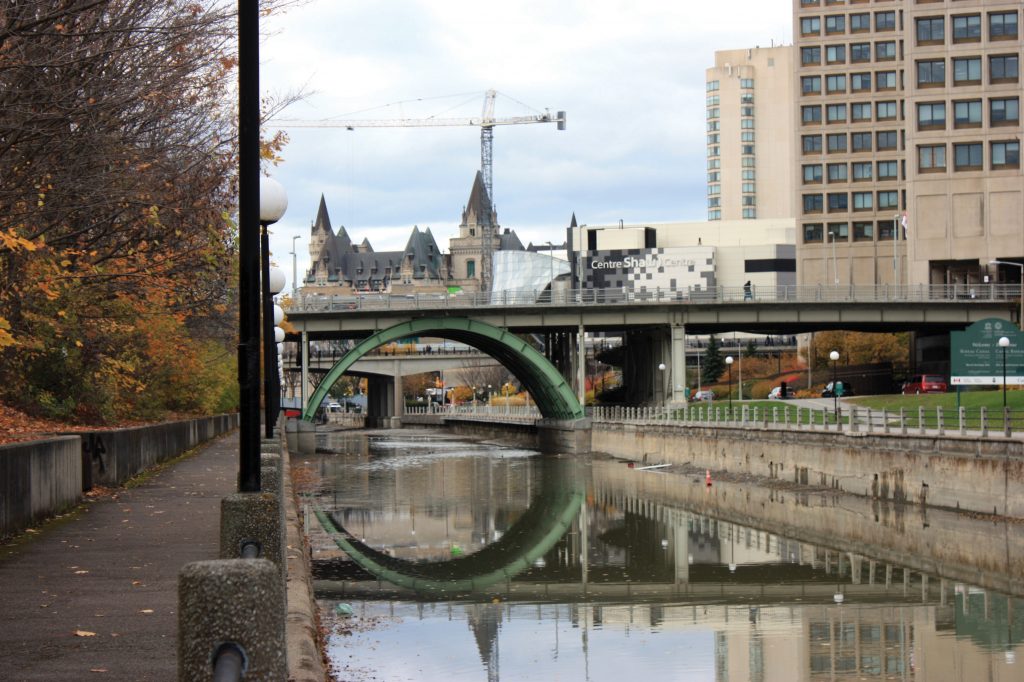Canal’s industrial past leads to listing as toxic site
By Jake Romphf
The legacy of the Rideau Canal’s industrial roots is still being felt today, as a section of the oldest continually operating canal in North America is now listed on the Federal Contaminated Sites Inventory.
Initial tests done by Parks Canada in January 2017 found sediment on the bed of the Rideau Canal contaminated with heavy metals and hydrocarbons. Parks Canada said a subsequent round of tests was done to “identify the scope and extent of contaminated sediment” and “ensure that all appropriate environmental protection measures can be put in place.”
Those test results led to the recent listing of the section of the canal in downtown Ottawa — from the Ottawa Locks to Bronson Avenue, a stretch of waterway that serves as the eastern boundary of Centretown, as well as the eastern and southern boundaries of the Glebe – on the national registry of contaminated federal properties.
The Rideau Canal is mainly used as a tourist attraction and for recreational purposes such as ice skating, fishing and boating. The canal was built “for the British military’s protection of the Britain’s North American colonies” due to the “hostility of the newly independent United States,” said Hunter McGill, a member of Friends of the Rideau, which promotes canal heritage and advocates for its protection.
According to McGill, the canal never served any military purpose as tensions between Britain and the United States diminished soon after it was built.
“I wasn’t surprised, because of the history of the Rideau Canal,” said McGill, when asked about his response to the Parks Canada findings.
The canal operated throughout the 19th and early 20th centuries as a corridor of commercial navigation, which encouraged the growth of industry along the waterway. The railway also ran along the full 200-kilometre length of the canal from Kingston to Ottawa, into the core of the capital to the main train station — today’s Government Conference Centre.
“There were factories and storage depots for coal as it was the industrial centre of the city,” said McGill. “The boats on the canal — many of them burned coal to operate their steam engines.”
The canal received other inputs of contaminants during its industrial years, such as sewage and waste from streets, homes, and commercial areas, according to the Historical Society of Ottawa.
The kinds of chemicals found in the soil contaminated by historical activity have been linked to various types of cancers. But the findings about the canal bottom’s contamination “presents a very low risk to human health” and “is generally only a concern if someone were to have direct contact with the contaminated sediments of the bed of the Rideau Canal,” said Parks Canada.
The message from the federal agency to the public is that contaminated sediments should not pose a threat as long as the sediments are left undisturbed. “The contaminated sediment is trapped inside the bed of the canal,” it said.
McGill said he agrees that the sediments should not be a problem, because development and construction along the canal are what would disturb the sediment, and such activity is unlikely.
The canal shares the designation of contaminated federal land in Ottawa with LeBreton Flats. In 2016, the National Capital Commission hauled 200,000 tonnes of contaminated soil from the proposed downtown redevelopment lands, according to the Ottawa Citizen. It recently reported that the NCC, the City of Ottawa and the RendezVous LeBreton Group — which won the bid for the redevelopment — are in bargaining to share soil remediation costs.
The canal is a UNESCO World Heritage site – the same designation held by the Great Pyramids of Egypt – because it represents a landmark feat of 19th-century transportation engineering.

